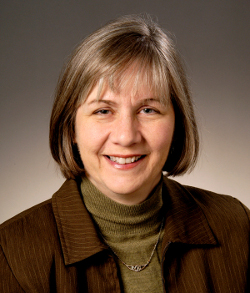Earlier this month, Jill Batty became CFO of
Previously, Ms. Batty was senior vice president of finance and CFO of Cheshire Medical Center/Dartmouth-Hitchcock Keene (N.H.). At CMC/DHK, she helped develop processes, strategies and systems that enabled the health system to transition to population health management, adapt to state and federal reimbursement changes and improve operating margins.
 Now, she's applying what she's learned in more than 20 years of experience as a strategist, financial operations executive and healthcare consultant to help CHA — a safety-net provider with three hospital campuses in
Now, she's applying what she's learned in more than 20 years of experience as a strategist, financial operations executive and healthcare consultant to help CHA — a safety-net provider with three hospital campuses in
Here, she discusses her priorities for CHA in 2014 and how patient care is at the heart of healthcare finance leadership.
Question: CHA is transforming its system to align with the triple aim: Improve the health of populations, enhance the patient experience of care and reduce the costs of care. What is CHA doing to reduce or control the cost of care as part of that initiative?
Jill Batty: The organization is very focused on two fronts of controlling the cost of care. One is the unit cost and making sure that each individual unit of care is provided efficiently and effectively. The second is to work in innovative ways to make sure that the total medical expenses of the population that we care for is at its lowest level.
Q: What are your biggest financial concerns and priorities for CHA in 2014?
JB: As with many healthcare organizations that are evolving from fee-for-service into a more population health-driven environment, we just have to get a handle on how to shift our resources and investments from one model to the other, and really get a plan in mind and effectively communicate that plan so people understand why we're shifting our investments.
Q: What challenges does CHA face as a safety-net provider, particularly in a time when hospitals are facing increasing financial pressure from reimbursement reductions and the need to contain costs while improving quality of care?
JB: I think [the challenges] are very similar for all healthcare providers right now, except that the needs of the population are more intense than the standard population because safety-net providers address needs that might not be served by other organizations. They have patients that have socioeconomics in their lives that make their needs more intense.
Q: Healthcare providers are facing a lot of uncertainty at the moment concerning how the Patient Protection and Affordable Care Act health insurance exchanges and Medicaid expansion will play out. What's your take on the impact those market reforms will have, and how is CHA responding?
I think that our main focus is that we're going to be here for our patients and our community no matter what the impact of those changes in the market will be. We just need to be prepared to really meet the cost goals of the purchasers. Under the PPACA, you're going to have a different mix of purchasers and a different mix of how patients are distributed across those purchasers. I think as long as we keep our eye on the ball of the first two things I referenced — which is that we're making each individual service we provide efficient and we make the medical spend as low as possible — then we're going to be meeting the objectives of all purchasers. We're basically situating ourselves to be able to meet those objectives.
Q: In your decades of experience as a strategist, financial operations executive and healthcare consultant, what is the most important lesson you've learned about healthcare leadership?
JB: The most important thing for me is that I and the people that I work with chose healthcare service as our primary career. Our interest is in the service component of healthcare and the patient care component of healthcare, and we have to speak to that in the decisions that we make.
I found that to be true of people who work in finance in healthcare…people are working in healthcare for that underlying reason, and so we have to put the strategy in that context when we're asking people to change.
More Articles on Hospital and Health System CFOs:
The 3 CFOs Behind HFMA's Financial Communication Best Practices
Getting Involved at Every Level: Q&A With Bayhealth CFO Mike Tretina
Translating and Collaborating: Q&A With Greg Johnston, CFO and Senior Vice President of Baptist Health System

